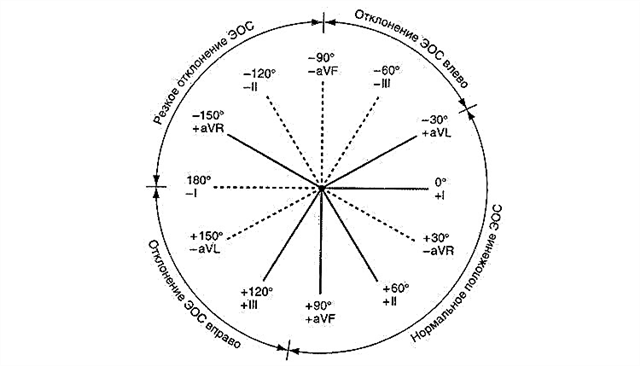Chronic ethmoiditis is a disease of the paranasal sinuses, not the most common, but one of the most dangerous among all respiratory diseases. Due to the vague symptoms and features of the anatomical location of the ethmoid labyrinth, the mucous membranes of which become inflamed during ethmoiditis, it is difficult to diagnose in the subacute phase, and treatment is usually aimed at suppressing the symptoms, rather than eliminating the cause.
Causes of the disease
 Most often, the main reason for the development of ethmoiditis is the ingestion of pathogenic bacteria transmitted by airborne droplets into the body. However, inflammation of the mucous membranes can also be caused by internal infections, which are constantly in the body, but make themselves felt only with a strong weakening of the immune system.
Most often, the main reason for the development of ethmoiditis is the ingestion of pathogenic bacteria transmitted by airborne droplets into the body. However, inflammation of the mucous membranes can also be caused by internal infections, which are constantly in the body, but make themselves felt only with a strong weakening of the immune system.
Among the main causes of the disease, experts note:
- frequent colds and acute respiratory infections;
- chronic inflammation of the paranasal sinuses;
- anatomical features of the structure of the nose;
- congenital or acquired curvature of the nasal septum;
- frequent or severe hypothermia;
- chronic inflammation of the tonsils;
- strong proliferation of the adenoids;
- frequent and / or severe allergic reactions;
- atrophic changes in the mucous membrane under the influence of bad habits;
- constant exposure to external stimuli;
- injury or surgery to the face and nose.
Due to the central location of the ethmoid labyrinth, chronic ethmoiditis can develop against the background of sinusitis, frontal sinusitis, infectious or allergic rhinitis.
In fact, any respiratory illness or severe irritation with swelling and profuse mucus production can trigger an inflammatory process in the ethmoid labyrinth.
The main symptoms
In contrast to the acute form in chronic ethmoiditis, the symptoms are blurred, they do not give a clear clinical picture. It only helps that for the first time the disease always causes acute conditions:
 temperature rise, usually up to 37.5-38OWITH;
temperature rise, usually up to 37.5-38OWITH;- recurrent headaches;
- pain in the interorbital part of the bridge of the nose;
- swelling of the bridge of the nose and concha;
- redness and inflammation in the inner corners of the eyes;
- serous or purulent nasal discharge;
- the patient's feeling of a purulent odor;
- sleep disturbances, irritability;
- severe decrease or loss of smell;
- signs of general intoxication of the body.
When the disease becomes chronic, pain is significantly reduced or absent altogether, but the sense of smell is not fully restored. Discharge from the nose can appear periodically - with sudden changes in temperature or after being in the cold.
Irritability, sleep problems, shortness of breath do not go away and are constantly present, sometimes increasing, sometimes decreasing.
Many patients complain of a lack of appetite and interest in life in general. So even if there are no complications, the overall quality of life in chronic ethmoiditis deteriorates significantly.
Possible complications
Chronic ethmoiditis is so dangerous that it is impossible to diagnose it yourself at home. Even a specialist for an accurate diagnosis and identification of the clinical picture will need hardware examination data: endoscopy results, X-ray or computed tomography. Only they will show the true causes and features of the course of the disease.
Long-term absence of treatment and the constant presence of sluggish inflammatory processes in the labyrinth provoke the development of serious complications:
 with the transition of inflammation to other sinuses, frontal sinusitis or sinusitis (often purulent) develops;
with the transition of inflammation to other sinuses, frontal sinusitis or sinusitis (often purulent) develops;- with inflammation of the meninges, meningitis or encephalitis occurs;
- with prolonged suppuration, the bones of the trellised labyrinth are destroyed;
- in the presence of polyps, their degeneration into malignant formations is possible;
- when an infection enters the bloodstream, sepsis and metastatic abscesses occur;
- with damage to the optic nerves, vision is impaired;
- permanent ethmoidal rhinitis can lead to a complete loss of smell.
It is much more difficult to cure these complications than ethmoiditis, and some of them pose a real danger to the health and life of patients. That is why it is very important, if you suspect this disease, be sure to be examined and carefully treated.
Treatment regimen
There is no single treatment regimen for chronic ethmoiditis, since everything depends on the causes of the development of the disease and the characteristics of its course in each case. The maximum effect is obtained by a combination of traditional and traditional medicine plus physiotherapy procedures.
 Even with an exacerbation of chronic ethmoiditis, hospitalization of the patient is not required, as well as taking antipyretic drugs - the temperature rarely goes beyond subfebrile. Basically, the use of anti-inflammatory drugs "Nurofen", "Ibuprofen", "Paracetamol" is sufficient to improve the condition and normalize the temperature.
Even with an exacerbation of chronic ethmoiditis, hospitalization of the patient is not required, as well as taking antipyretic drugs - the temperature rarely goes beyond subfebrile. Basically, the use of anti-inflammatory drugs "Nurofen", "Ibuprofen", "Paracetamol" is sufficient to improve the condition and normalize the temperature.
The need to use antibiotics is determined only by the attending physician. They are indicated only in cases where serious complications have begun to develop or the disease is provoked by the constant presence of pathogenic microorganisms in the body. What type of drugs to use will be prompted by the results of bacterial inoculation of mucus from the nose, and the dosage and duration of administration will be determined by the doctor.
Antihistamines and vasoconstrictor drugs give a good therapeutic effect: they quickly relieve swelling and resume air circulation in the labyrinth, thus worsening the conditions for the development of anaerobic microorganisms. The use of oil-based drops: chlorophyllipt solution, "Pinosol", sea buckthorn oil will help to quickly restore damaged mucous membranes.
From physiotherapeutic procedures are shown: UHF, nasal electrophoresis with antibiotics or antiseptics, quartz tube in the nose and mouth, laser warming up. The minimum number of procedures is 7-10.
Upon completion of the course of treatment, it is necessary to undergo a second examination to make sure of a complete recovery.
Folk remedies
The use of folk remedies is usually enough to prevent an exacerbation of chronic ethmoiditis, but they are not able to completely cure the disease. Therefore, if you want to get rid of the problem once and for all, take the full course of drug treatment. And folk methods with the permission of a doctor should be connected as auxiliary means:
- rinsing the nose with saline solutions;
- steam inhalation with oils of St. John's wort, eucalyptus, lavender, sage;
- instillation with freshly squeezed juices: beetroot, potato, onion in half with honey;
- instillation with coniferous essential oils diluted with the base in a ratio of 1:10;
- gauze turundas soaked in sea buckthorn oil (add for 15-20 minutes);
- lubrication with honey with propolis tincture (inside the nasal passages).
If the examination does not reveal accumulations of pus in the cells of the labyrinth, home warming is recommended: with a salt bag, a boiled egg, volcanic stones, paraffin, a blue lamp or other available method. Warm up before going to bed for 10-15 minutes, and then you can not open the window and turn on the air conditioner to exclude the possibility of hypothermia.
To strengthen the immune system, it is very useful to drink warm herbal teas. It is advisable to drink them at least 1-1.5 liters per day. At the same time, it will help to remove from the body toxins formed during the illness.
The most useful teas are from linden flowers, dried raspberries, currant leaves, elder flowers, mint leaves, rose hips. They have an anti-inflammatory effect and help to cope with the disease faster. In the absence of allergies, add a slice of lemon and a teaspoon of quality honey to the tea.
Polypoid ethmoiditis
One of the varieties of the chronic form of the disease is polyposis ethmoiditis. Unfortunately, it does not lend itself to conservative treatment, since, once formed, the polyps gradually grow, occupy an ever larger area, put pressure on the mucous membrane and sometimes cause severe pain.
The periods of remission are getting shorter, and the symptoms with exacerbation are more pronounced. The main danger is that if the narrow passage connecting the ethmoid labyrinth with the nasal passage turns out to be completely blocked, and an infection gets into its cells, then a constant accumulation of pus will form in them.
 Over time, it can get into the frontal or maxillary sinuses, cause severe inflammation of the conjunctiva of the eyes and even provoke such serious complications as sepsis, meningitis, multiple abscesses, including in the lungs and brain. The only sure way to cure diseases and avoid complications is surgery.
Over time, it can get into the frontal or maxillary sinuses, cause severe inflammation of the conjunctiva of the eyes and even provoke such serious complications as sepsis, meningitis, multiple abscesses, including in the lungs and brain. The only sure way to cure diseases and avoid complications is surgery.
You should not be afraid of surgical intervention. The operation is quite simple and relatively painless. It is often performed under local anesthesia and does not require serious preliminary preparation. It is usually prescribed in the stage of remission, when the activity of the inflammatory process is minimal.
The operation scheme is simple:
- Soft tissues are dissected outside or through the nasal cavity.
- The cells of the lattice labyrinth are opened.
- All neoplasms are removed.
- The labyrinth is washed with an antiseptic solution.
- Small stitches are applied.
In modern clinics, the operation is usually performed using high-tech equipment and a laser scalpel, which simultaneously disinfects the wound and seals the blood vessels. Thus, the risk of infection and wound suppuration is reduced to almost zero.
The excised tissue must be sent for cytological examination to make sure that the neoplasms are benign. Within a day, in the absence of complications (which are extremely rare with a high-quality operation performed), the patient can be sent home for outpatient follow-up care.
The active rehabilitation period is only a few days. At this time, you can not take a bath, play sports and do heavy physical work. It is better to avoid sudden changes in temperature and air pressure (including airplane flights). You can return to a normal lifestyle after 10-14 days.
Prevention measures
As with any respiratory illness, strong immunity and a healthy lifestyle are the first means of prevention. Smoking increases the likelihood of developing chronic diseases of the nasal cavity by 10-15 times, reduces the immune defense, and leads to atrophic changes in the nasal mucosa.
 After suffering acute respiratory infections, acute respiratory viral infections, colds, which are very important to cure to the end, you can drink a course of multivitamins and immunomodulators. They will help to restore the body faster and reduce the likelihood of complications. Other simple preventive measures are helpful:
After suffering acute respiratory infections, acute respiratory viral infections, colds, which are very important to cure to the end, you can drink a course of multivitamins and immunomodulators. They will help to restore the body faster and reduce the likelihood of complications. Other simple preventive measures are helpful:
- rejection of bad habits;
- keeping the room clean;
- elimination of external stimuli;
- relief of severe allergic reactions;
- avoidance of drafts and severe hypothermia.
All types of rhinitis and sinusitis must be completely cured. Any infection and inflammation in the nose can provoke ethmoiditis. Therefore, if you are treating a runny nose at home for more than 2 weeks, and it does not go away, a consultation with a doctor is required.

 temperature rise, usually up to 37.5-38OWITH;
temperature rise, usually up to 37.5-38OWITH; with the transition of inflammation to other sinuses, frontal sinusitis or sinusitis (often purulent) develops;
with the transition of inflammation to other sinuses, frontal sinusitis or sinusitis (often purulent) develops;

